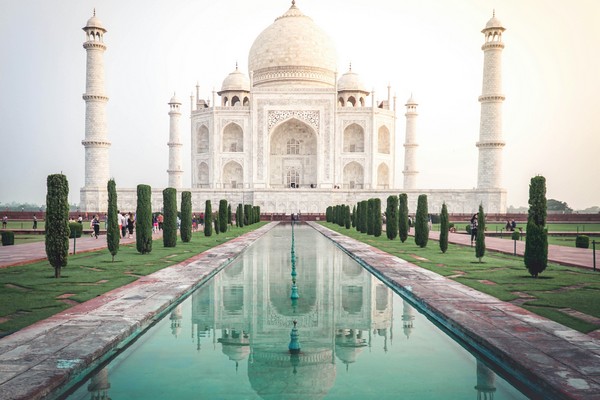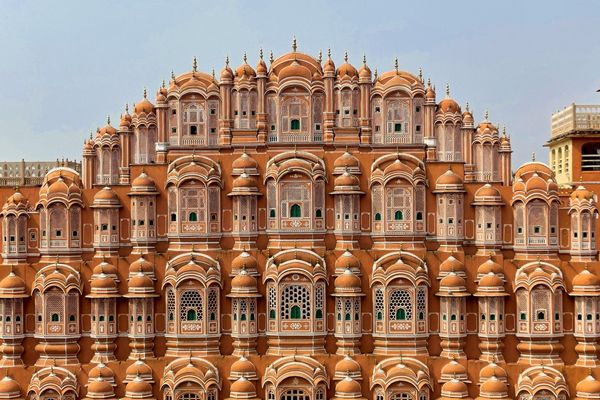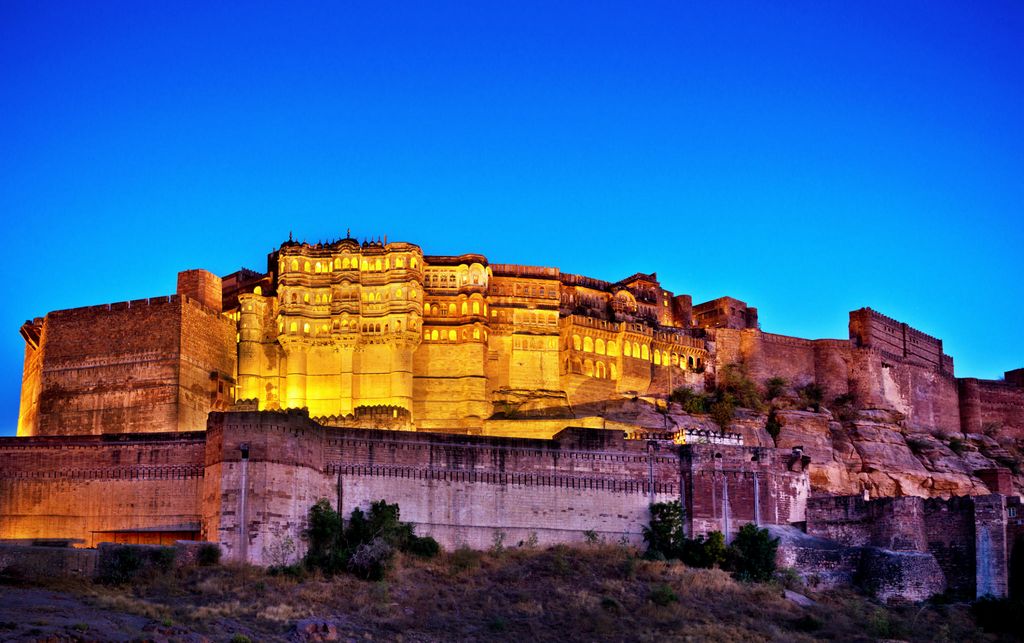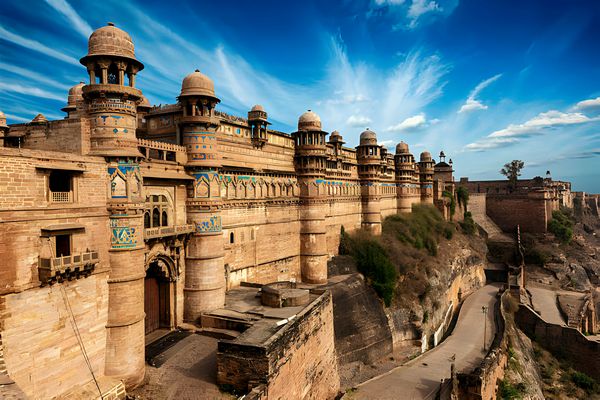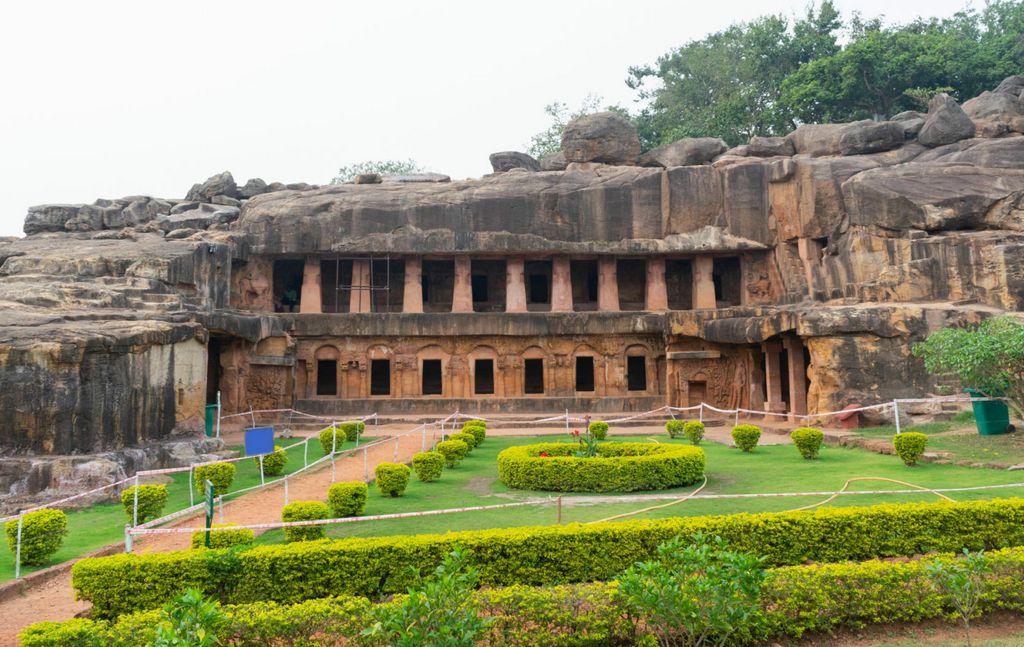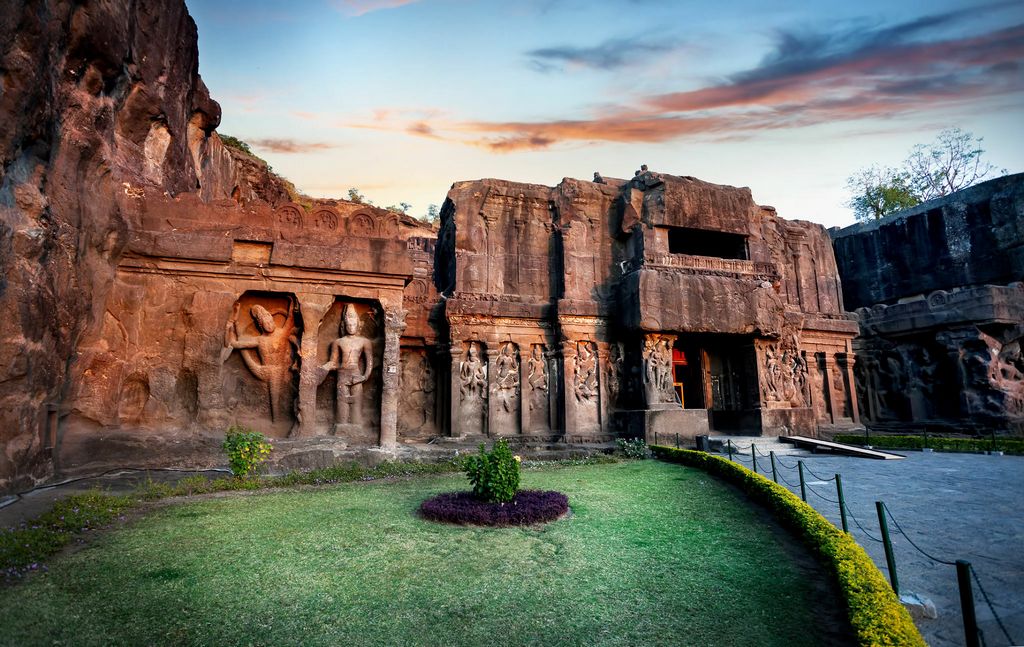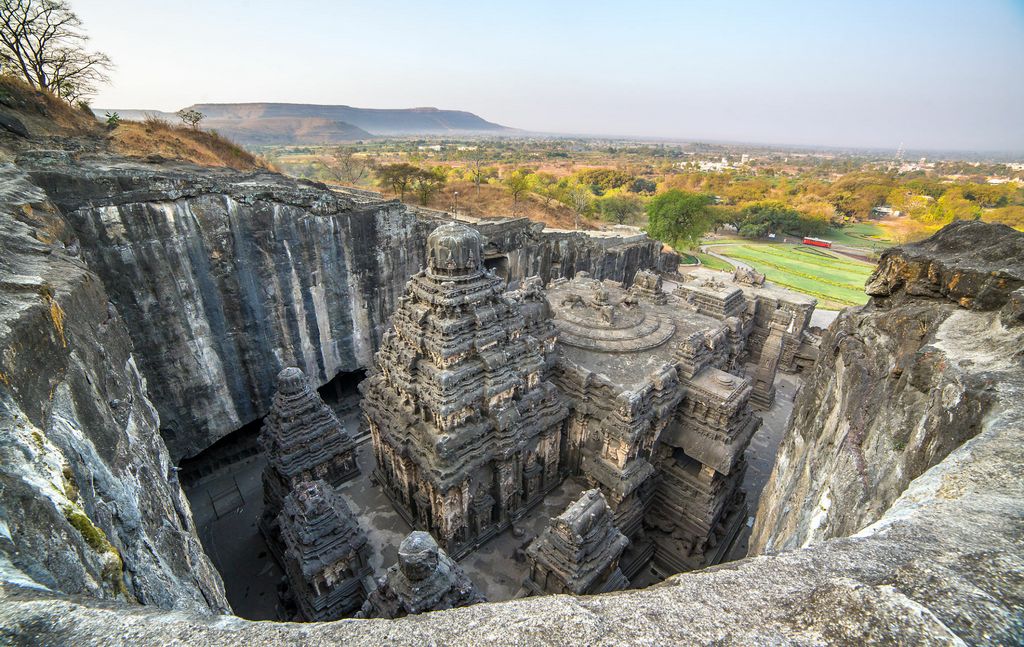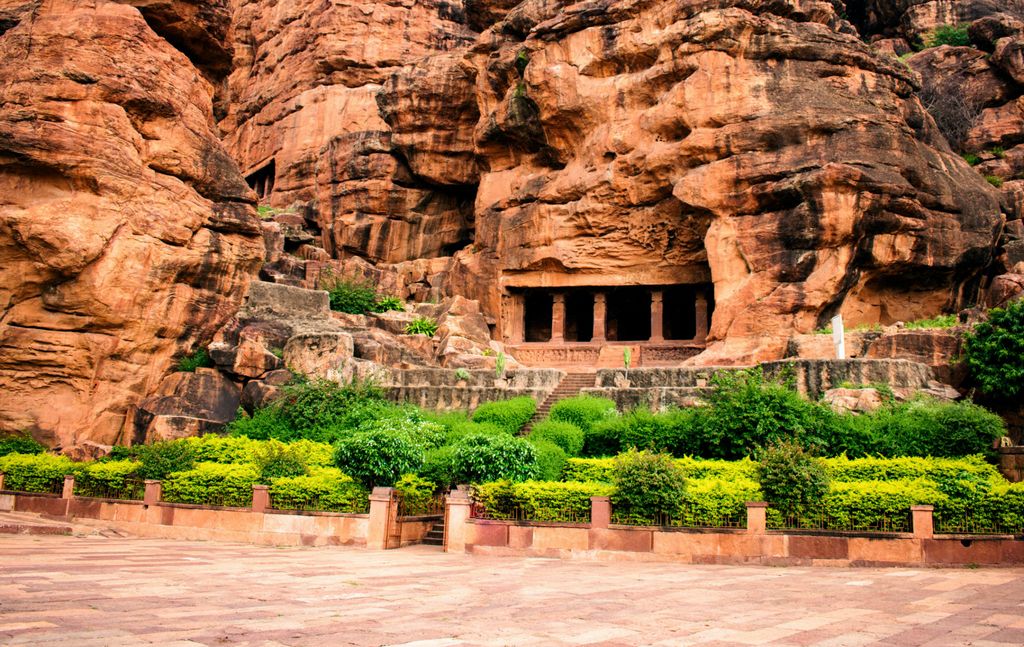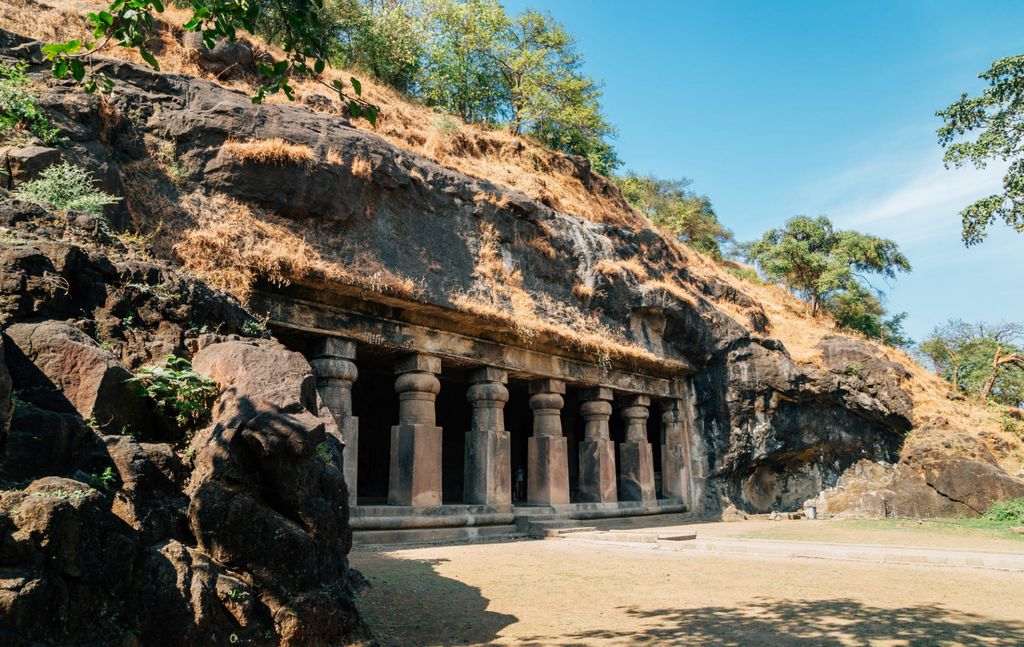Introduction:
India’s landscape is adorned with an exquisite array of cave temples, each a testament to ancient craftsmanship, spiritual devotion, and artistic brilliance. These cavernous sanctuaries, predominantly aligned with Buddhism, Jainism, and Hinduism, stand as architectural marvels nestled within the rocky terrain across the country. Carved painstakingly into cliffs and hillsides, these temples bear witness to India’s diverse religious traditions and cultural heritage, offering visitors a journey through time and spirituality. Though there are more than 1500 cave temples explored in India so far, here we are discussing about 10 cave temples.
1. Ajanta Caves, Maharashtra
The Ajanta Caves, nestled within the rugged cliffs of Maharashtra, India, stand as a hallmark of ancient artistry and spiritual devotion. Carved meticulously between the 2nd century BCE and 6th century CE, these 30 rock-cut caves served as a sanctuary for Buddhist monks. Their historical significance lies not only in their age but also in the exquisite frescoes and sculptures that adorn their interiors, depicting the life and teachings of Buddha. This UNESCO World Heritage Site represents a pinnacle of Indian rock-cut architecture, showcasing intricate detailing and mastery of sculptural art. Each cave holds a unique narrative, from serene monasteries to prayer halls, illustrating the evolution of Buddhist architecture over centuries. The Ajanta Caves continue to mesmerize visitors, offering a profound glimpse into India’s cultural heritage and the zenith of ancient artistic expression. They stand as a testament to human craftsmanship and unwavering spiritual dedication, preserving a timeless legacy admired by art enthusiasts and historians globally.
2. Ellora Caves, Maharashtra
The Ellora Caves, situated in Maharashtra, India, represent a breathtaking fusion of religious diversity, architectural brilliance, and artistic excellence. Carved between the 6th and 10th centuries, this UNESCO World Heritage Site comprises 34 caves that span Buddhist, Hindu, and Jain faiths. The most remarkable feature of Ellora is its unique integration of multiple religious traditions within a single complex, showcasing a harmonious coexistence of different ideologies. The architecture of Ellora is a testament to the skill and dedication of ancient craftsmen who meticulously carved out these grand structures from solid rock. The caves feature elaborate sculptures, ornate facades, intricately detailed pillars, and awe-inspiring rock-cut temples that narrate mythological tales and spiritual teachings. Prominent caves include the Kailasa Temple (Cave 16), an awe-inspiring monolithic structure dedicated to Lord Shiva, and the Buddhist caves (Caves 1-12) renowned for their serene beauty and exquisite sculptures. The Ellora Caves stand as a living testament to India’s rich cultural heritage, drawing admiration for their architectural marvels and serving as a symbol of religious tolerance and artistic magnificence that transcends time and boundaries.
3. Badami Cave Temples, Karnataka
The Badami Caves, located in Karnataka, stand as exemplary specimens of Chalukya architecture, marking a significant chapter in the history of South Indian temple architecture. Carved out of sandstone cliffs in the 6th and 7th centuries, these rock-cut temples represent the peak of Chalukyan craftsmanship. The four cave temples, dedicated to Hindu deities, showcase distinct architectural styles and intricate artwork. Cave 1, devoted to Lord Shiva, displays a massive sculpture of Nataraja in the 18-armed Tandava posture, demonstrating the artistic finesse and mastery of sculptors. Cave 2, dedicated to Lord Vishnu, features reliefs depicting various avatars of Vishnu, along with detailed carvings of celestial beings. Cave 3, dedicated to Lord Vishnu as Trivikrama, portrays a majestic depiction of the cosmic leap of Trivikrama. Cave 4, identified as a Jain temple, exhibits splendid carvings of Jain Tirthankaras and yakshis, emphasizing the diversity of religious beliefs during that era. The Badami Caves hold immense significance in South Indian temple architecture, serving as a testament to the artistic and cultural legacy of the Chalukya dynasty and their contributions to India’s architectural heritage.
4. Elephanta Caves, Maharashtra
The Elephanta Caves, situated on Elephanta Island in Mumbai Harbor, represent a UNESCO World Heritage Site renowned for their spiritual and artistic significance. These caves, carved between the 5th and 8th centuries, primarily center around Lord Shiva and stand as remarkable examples of rock-cut architecture dedicated to Hinduism. The Shiva-centric caves, notably Cave 1, showcase awe-inspiring sculptures, including the iconic Trimurti, a colossal three-headed bust of Lord Shiva depicting his roles as creator, preserver, and destroyer of the universe. The intricate carvings within these caves narrate episodes from Hindu mythology, such as scenes from the Puranas and various manifestations of Lord Shiva. The cultural and religious importance of the Elephanta Caves lies in their role as a pilgrimage site and a center for spiritual contemplation, attracting devotees and art enthusiasts alike to witness the divine aura and artistic splendor that reverberates through these ancient caverns. These caves serve as a testament to the rich cultural heritage and artistic prowess of ancient India, leaving visitors in awe of their grandeur and spiritual significance.
5. Udayagiri and Khandagiri Caves, Odisha
The Udaygiri and Khandagiri Caves, located in Odisha, are a testament to the rich cultural and religious heritage of India, specifically significant to Jainism. Dating back to the 2nd century BCE, these caves comprise a complex of rock-cut Jain cave temples and monasteries. The historical importance of these caves lies in their function as dwelling spaces for Jain monks and the depiction of Jain art and architecture. The caves showcase unique architectural styles, with Udaygiri consisting of 18 caves and Khandagiri featuring 15 caves, each intricately adorned with carvings depicting Jain deities, yakshis, and scenes from Jain mythology. Exploring these caves offers a glimpse into the ascetic lifestyle and spiritual practices of Jainism, inviting visitors to witness the serene ambiance and artistic grandeur that permeates these ancient sanctuaries. The Udaygiri and Khandagiri Caves hold profound significance in Jainism, serving as a revered pilgrimage site and an influential center for Jain spirituality, fostering a deep connection to the religion’s teachings and principles, while also offering an immersive experience in ancient cave exploration and architectural marvels.
Conclusion:
In conclusion, the cave temples of India stand as timeless testaments to the country’s rich cultural tapestry, spiritual diversity, and unparalleled architectural brilliance. Spanning across various regions and religious affiliations, these historical marvels encapsulate millennia-old stories, intricate artworks, and spiritual sanctity. From the mystical Ajanta and Ellora Caves to the serene Udaygiri and Khandagiri Caves, each site narrates a unique chapter in India’s history, showcasing the amalgamation of artistic finesse and religious devotion. As custodians of India’s heritage, these cave temples beckon travelers and enthusiasts to embark on a captivating journey through time, encouraging exploration and discovery of the nation’s unparalleled architectural and spiritual legacy. By delving into these sacred spaces, one not only witnesses the grandeur of ancient craftsmanship but also connects with the profound spiritual essence embedded in every carving and inscription. Let us embrace the opportunity to immerse ourselves in these living chronicles of the past, fostering an appreciation for the rich cultural heritage that these cave temples ardently preserve, inviting us to unravel the mysteries and marvels of India’s historical and architectural wonders.

